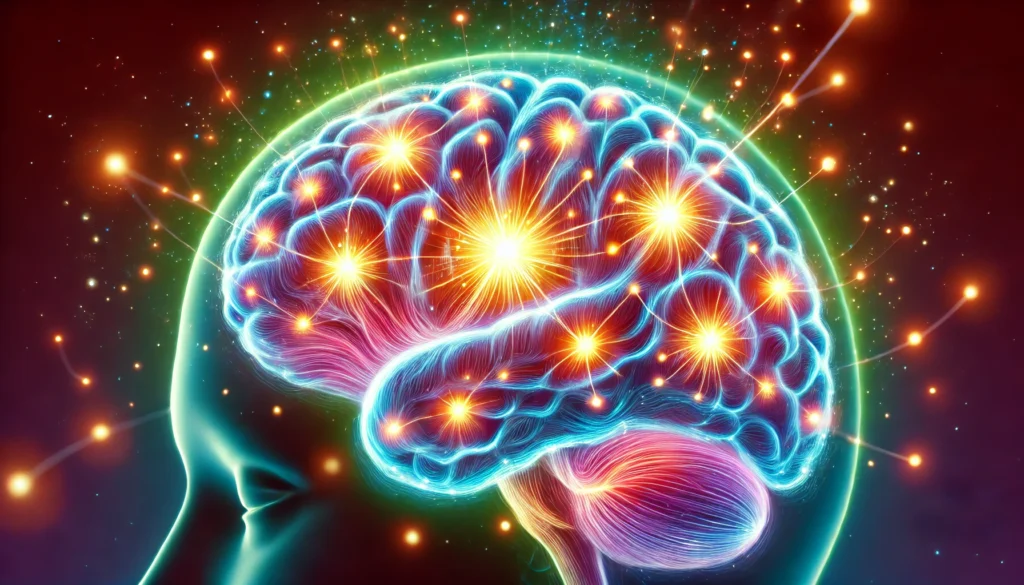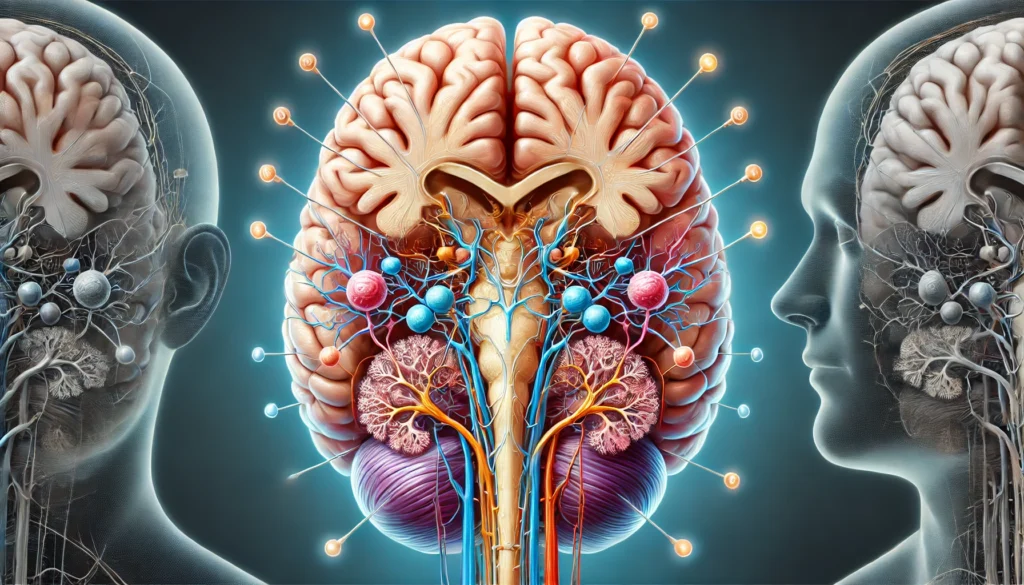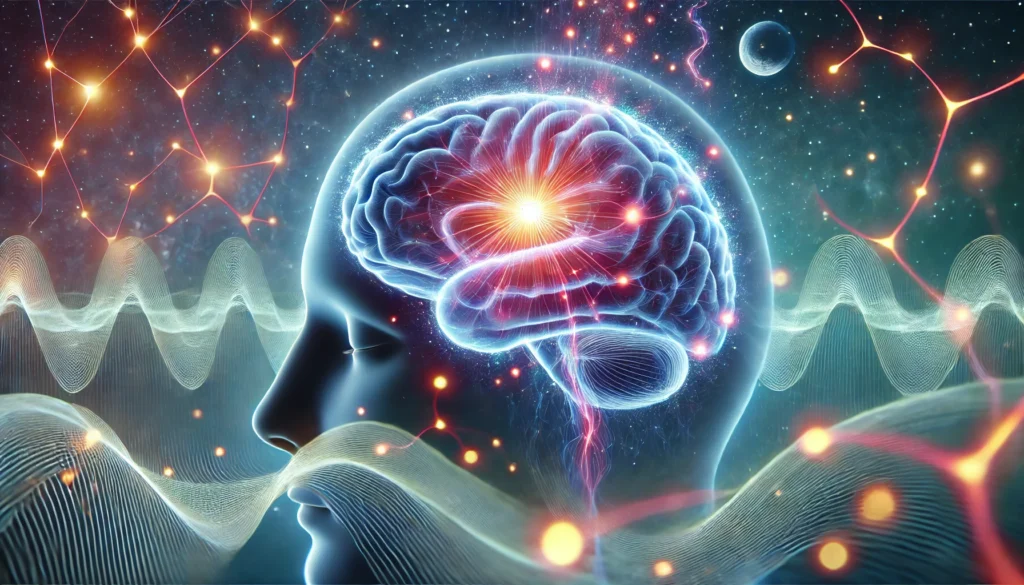REM sleep is a fascinating subject for scientists due to its unique characteristics and vital functions. Occurring cyclically several times during a typical night of sleep, REM sleep makes up about 20-25% of an adult’s sleep cycle. During REM sleep, the brain is remarkably active, often resembling its activity levels when awake. This is a stark contrast to other sleep stages where brain activity tends to slow down.
You may also like: The Connection Between Sleep and Memory
The Cyclical Nature of REM Sleep
The cycle of REM sleep is interspersed with other sleep stages, creating a dynamic rhythm throughout the night. Typically, a sleep cycle lasts about 90 minutes, with REM sleep occurring at the end of each cycle. As the night progresses, REM periods become longer, emphasizing the importance of uninterrupted sleep for optimal REM duration. This cyclical pattern is essential for restorative sleep, as it allows the brain to process information and rejuvenate.
Physiological Changes During REM Sleep
During REM sleep, the body undergoes several physiological changes. Besides the rapid eye movements, there is an increase in heart rate and breathing patterns, often mimicking wakefulness. Despite these changes, the body remains in a state of atonia, or muscle paralysis, preventing individuals from acting out their dreams. This intriguing blend of active brain function and temporary muscle paralysis highlights the complexity of REM sleep and its regulation.
Brain Activity During REM Sleep
During REM sleep, brain activity is marked by increased oxygen consumption and energy use. This heightened activity predominantly involves the brain’s cortical and limbic regions, including the amygdala and hippocampus. These areas are pivotal for emotional regulation, memory processing, and learning, which hints at why REM sleep is often linked with these cognitive functions.
The amygdala, a key player in emotion processing, is particularly active during REM sleep, suggesting a role in processing emotional experiences. Similarly, the hippocampus, essential for memory formation, is believed to be involved in consolidating memories and learning during REM phases. This activity underscores the importance of REM sleep in emotional and cognitive processing, making it a critical component of overall mental health.
Benefits of REM Sleep
The benefits of REM sleep extend across various domains of mental and physical health. Foremost among these is its role in memory consolidation. REM sleep aids in transferring information from short-term to long-term memory, thereby enhancing learning and retention.
Memory Consolidation and Learning
Memory consolidation during REM sleep is a complex process involving the reactivation of neural circuits. This reactivation is believed to strengthen synaptic connections, facilitating the integration of new information. Studies have shown that REM sleep enhances procedural memory, which is crucial for skills and task learning. The link between REM sleep and memory highlights its importance in educational settings and lifelong learning.
Emotional Regulation and Mental Health
Another significant benefit of REM sleep is emotional regulation. By processing and integrating emotional experiences, REM sleep helps mitigate stress and enhances mood stability. This has crucial implications for mental health, as disruptions in REM sleep are often associated with mood disorders such as depression and anxiety. Adequate REM sleep is essential for emotional resilience, enabling individuals to cope more effectively with daily stressors.
Creativity and Problem-Solving
Moreover, REM sleep has been implicated in creativity. The free-associative nature of dreams during REM sleep may facilitate novel connections and insights, thus fostering creative problem-solving. This is particularly relevant in fields requiring innovation and original thinking, where a good night’s sleep can lead to breakthroughs and new perspectives. Understanding the link between REM sleep and creativity can encourage practices that enhance both personal and professional growth.

Which Brain Part Is Critical for Regulating REM Sleep?
The regulation of REM sleep is a complex process involving multiple brain structures, but the pons, a part of the brainstem, is particularly critical. The pons acts as a switchboard, sending signals to the cerebral cortex to initiate REM sleep. It also communicates with the thalamus and hypothalamus to control the transition between sleep and wakefulness.
The Role of the Pons in REM Sleep
The pons is responsible for the paralysis of major voluntary muscles during REM sleep, a phenomenon known as REM atonia. This prevents individuals from acting out their dreams, a protective mechanism crucial for safe dreaming. The pons also coordinates with other brain areas to maintain the balance between sleep stages, ensuring that REM sleep occurs at the right time and duration.
The Influence of the Thalamus and Hypothalamus
The thalamus and hypothalamus are integral to the regulation of sleep-wake cycles. These structures help modulate the transitions between non-REM and REM sleep, acting as gatekeepers of sleep architecture. The hypothalamus, in particular, is involved in maintaining circadian rhythms, which influence the timing of REM sleep. Understanding these interactions provides insights into the delicate orchestration required for healthy sleep patterns.
The Role of Neurotransmitters
Neurotransmitters also play a significant role in regulating REM sleep. Acetylcholine is a key neurotransmitter that stimulates the onset of REM sleep, while norepinephrine and serotonin inhibit it. The delicate balance between these neurotransmitters dictates the timing and duration of REM phases. Disruptions in neurotransmitter levels can lead to sleep disorders, emphasizing the need for a balanced neurochemical environment for optimal REM sleep.
Historical Context and Current Trends
Historically, REM sleep was first identified in the 1950s by researchers Eugene Aserinsky and Nathaniel Kleitman. Their groundbreaking work laid the foundation for decades of sleep research that followed, unraveling the mysteries of this vital sleep stage.
The Discovery of REM Sleep
The discovery of REM sleep marked a pivotal moment in sleep research. Aserinsky and Kleitman’s observations challenged previous beliefs about sleep being a passive state. Their findings opened new avenues for understanding the complexities of sleep, leading to further exploration of its impact on health and behavior. This discovery underscored the dynamic nature of sleep, paving the way for modern sleep science.
Evolution of REM Sleep Research
Over the decades, REM sleep research has evolved significantly, incorporating advanced technologies and methodologies. From early polysomnography to modern neuroimaging, researchers continue to uncover the roles and mechanisms of REM sleep. This evolution reflects a growing recognition of sleep’s integral role in health, with REM sleep being a key focus due to its multifaceted benefits.
Current Perspectives on REM Sleep
In contemporary times, the significance of REM sleep is increasingly being recognized in the context of overall health and well-being. With the rise of sleep disorders and growing awareness of mental health issues, understanding and optimizing REM sleep has become a focal point for both scientists and the general public. This shift highlights the importance of integrating sleep health into broader wellness strategies, recognizing REM sleep as a cornerstone of mental and physical well-being.
Future Implications
Looking ahead, the future of REM sleep research holds promising potential. Advances in neuroimaging and sleep tracking technologies are providing deeper insights into REM sleep dynamics and its impact on health.
Technological Advances in Sleep Research
The advent of wearable sleep trackers and sophisticated imaging techniques has revolutionized sleep research. These tools offer unprecedented insights into individual sleep patterns, allowing for personalized assessments of REM sleep quality. As technology continues to advance, it promises to deepen our understanding of sleep disorders and facilitate targeted interventions.
Personalized Sleep Interventions
Moreover, personalized sleep interventions, informed by REM sleep patterns, may offer new avenues for enhancing cognitive and emotional well-being. Tailored approaches that consider individual differences in sleep architecture can lead to more effective treatments for sleep disorders. Personalized interventions hold the potential to optimize REM sleep, thereby improving overall health and quality of life.
Implications for Health and Wellness
The broader implications of REM sleep research extend to public health and wellness. As our understanding of REM sleep deepens, it can inform policies and practices that promote healthy sleep habits. Encouraging awareness of REM sleep’s benefits can foster a culture that prioritizes sleep as a vital component of health, ultimately contributing to improved societal well-being.

Practical Advice for Optimizing REM Sleep
For those keen on optimizing their REM sleep, certain lifestyle modifications can make a significant difference. Maintaining a regular sleep schedule, creating a conducive sleep environment, and managing stress are fundamental strategies.
Establishing a Regular Sleep Routine
One of the most effective ways to optimize REM sleep is by establishing a consistent sleep routine. Going to bed and waking up at the same time each day helps regulate the body’s internal clock, facilitating the natural progression of sleep cycles. Consistency in sleep patterns ensures that REM sleep occurs at its optimal duration and quality.
Creating a Sleep-Conducive Environment
A sleep-friendly environment is crucial for quality REM sleep. This involves minimizing noise, controlling light exposure, and maintaining a comfortable room temperature. Investing in a supportive mattress and pillows can also enhance sleep quality, promoting a seamless transition into and through REM sleep stages.
Stress Management and Relaxation Techniques
Incorporating relaxation techniques, such as mindfulness meditation and deep breathing exercises, can also promote a smoother transition into REM sleep. These practices help calm the mind, making it easier to enter the dream-rich realm of REM sleep. Reducing stress through lifestyle changes and relaxation techniques supports emotional well-being, further enhancing the benefits of REM sleep.
Avoiding Sleep Disruptors
Additionally, avoiding substances that disrupt sleep, such as caffeine and alcohol, can enhance REM sleep quality. Caffeine, a stimulant, can interfere with the onset of sleep, while alcohol, although initially sedative, can disrupt sleep architecture. Being mindful of dietary and lifestyle choices can significantly impact REM sleep, leading to improved mental and physical health.

Conclusion
In summary, REM sleep is a cornerstone of cognitive and emotional health, playing a vital role in memory consolidation, emotional regulation, and creativity. Understanding the complexities of REM sleep, from the brain’s orchestration of this phase to its myriad benefits, empowers us to prioritize and optimize this crucial aspect of our sleep cycle. As research continues to evolve, the potential for harnessing the power of REM sleep to enhance our well-being becomes ever more promising.
By appreciating and nurturing this pivotal sleep stage, we can unlock a treasure trove of benefits that enrich our mental and physical health, paving the way for a more balanced and fulfilling life. Embracing the importance of REM sleep encourages a holistic approach to health, acknowledging sleep as an integral component of our daily lives.
Further Reading:
Rapid Eye Movement Sleep: Regulation and Function
Important Note: The information contained in this article is for general informational purposes only, and should not be construed as health or medical advice, nor is it intended to diagnose, prevent, treat, or cure any disease or health condition. Before embarking on any diet, fitness regimen, or program of nutritional supplementation, it is advisable to consult your healthcare professional in order to determine its safety and probable efficacy in terms of your individual state of health.
Regarding Nutritional Supplements Or Other Non-Prescription Health Products: If any nutritional supplements or other non-prescription health products are mentioned in the foregoing article, any claims or statements made about them have not been evaluated by the U.S. Food and Drug Administration, and such nutritional supplements or other health products are not intended to diagnose, treat, cure, or prevent any disease.


